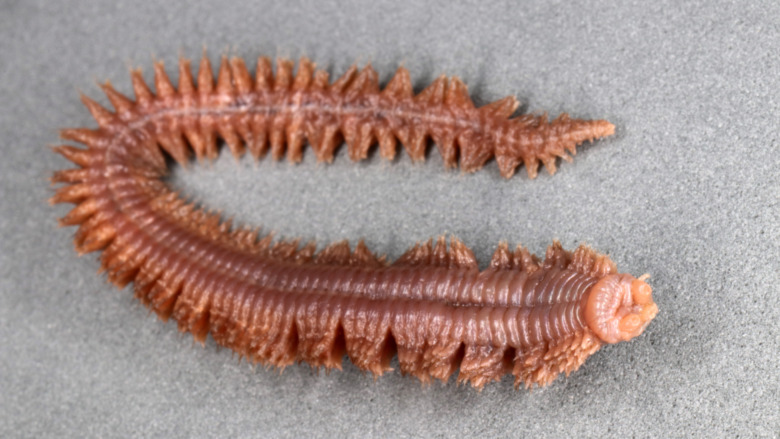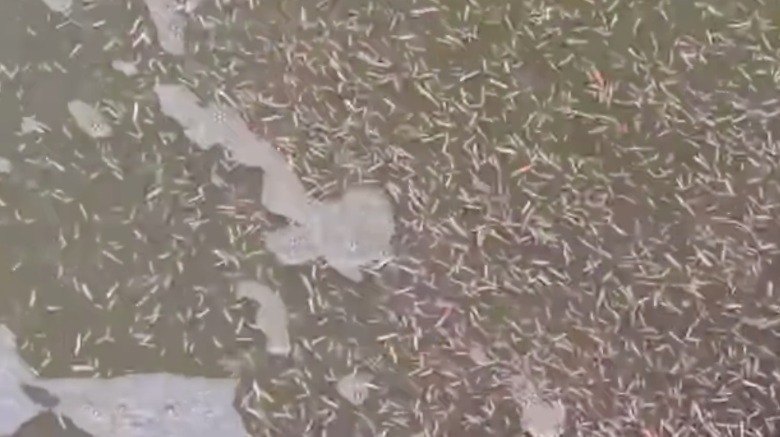Here's What You Need To Know About 'Biting Worms'
The sea is full of creepy yet fascinating creatures, and clam worms, sometimes called biting worms, are certainly no exception.
Clam worms are little sea predators who are uniquely evolved to catching their prey. According to Animal Diversity, the marine worms are "active, mobile predators that capture prey in jaws attached to their pharynges."
Serc Education reports the creatures mostly eat other worms and algae and are aided in that by a hook shaped jaw and proboscis (a hollow tubular cephalic appendage, per Biology Online). The pinkish worms grab prey and pull it into the mouth aided by small tentacles and palps. Ew.
Those jaws will bite a human, too.
Usually bottom dwellers, the members of the Polychaetes family transform into their reproductive forms called epitokes each year during new and full moons in spring, according to the South Carolina Department of Natural Resources, who posted a video of the creatures swarming this spring on Facebook. "You may not want to go swimming with epitokes," the SCDNR wrote, "as clamworms do have a set of hooked jaws, but it's hard not to appreciate such an unusual coastal sight."
Hey, whatever you're into.
Clam worms have zinc in their jaws to make them extra hard
According to Seacoast Online, the swarming phenomenon that transpires in these funky little worms with feather-like appendages happens when special cells fill the creatures' bodies with sperm and eggs. That process transforms clam worms into epitokes, whose new mission in life is to leave the sea floor and get to the top of the water. Once at the top, their bodies literally rupture in order to release all the eggs and sperm. While the result is the end of the life cycle for those biting worms, it is the beginning for the next batch of clam worms who will bear the torch until it's their turn to explode for the next generation.
Clam worms are also used for fishing bait, according to Walla Walla University, who reports they put up a fight by squirming "violently" and sticking out their proboscis and jaws to try and bite.
Their bites can be painful, per Seashore to Forest Floor. That's likely because their jaws are made partially of zinc, which makes them "strong, stiff and tough," yet still keeping the jaw lightweight, according to the University of California Santa Barbara.
Maybe during new and full moons in spring, just go to the pool.

